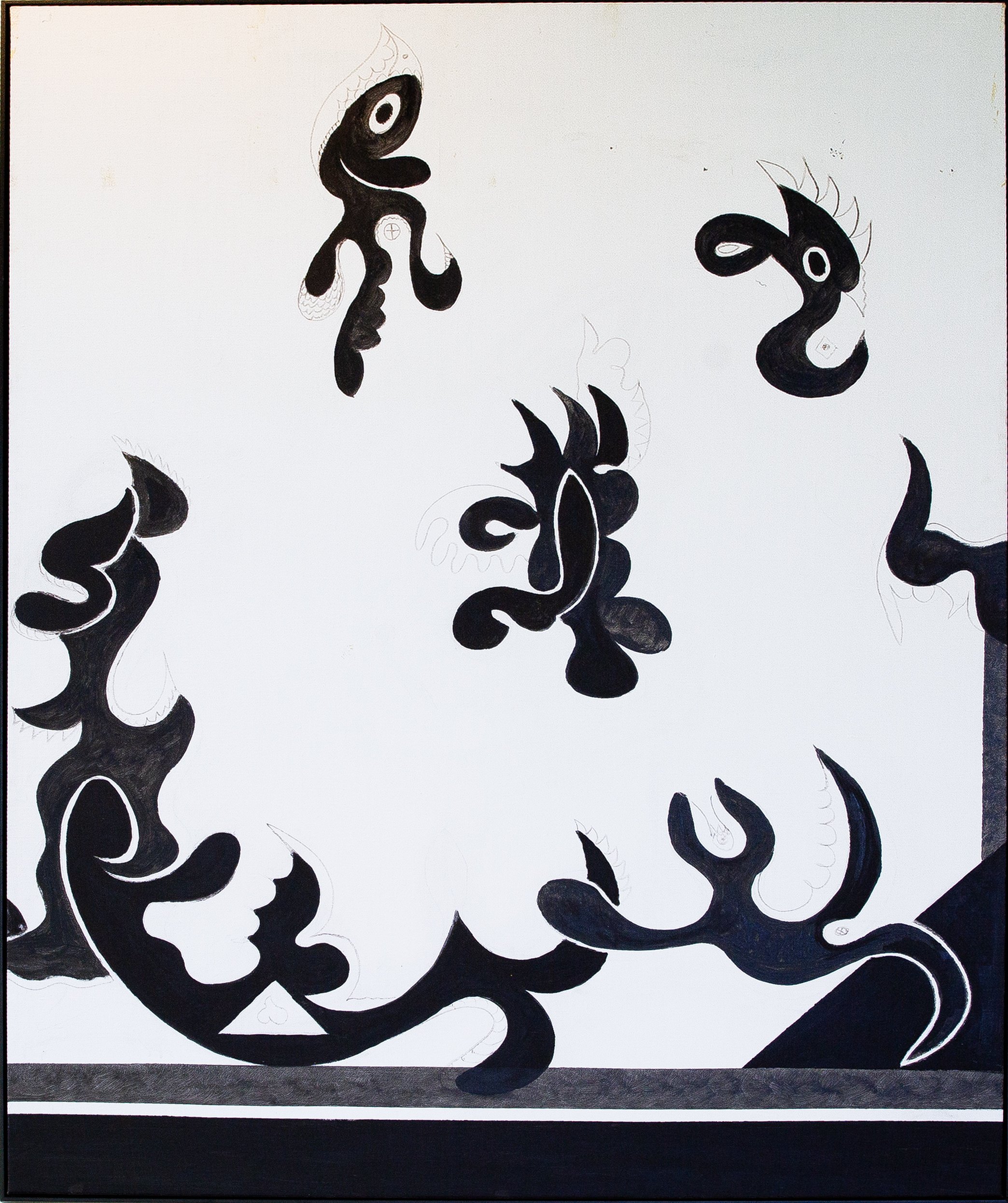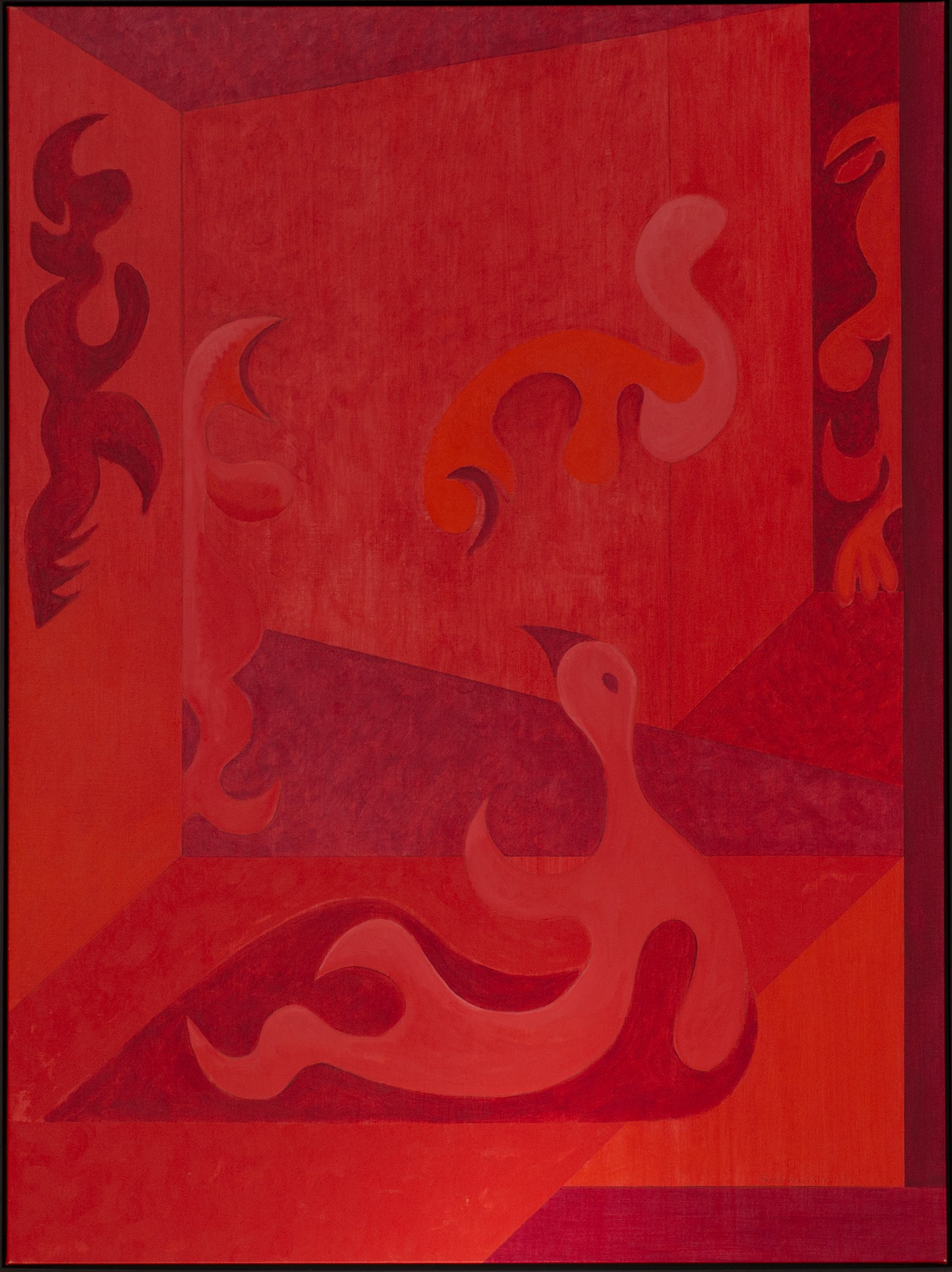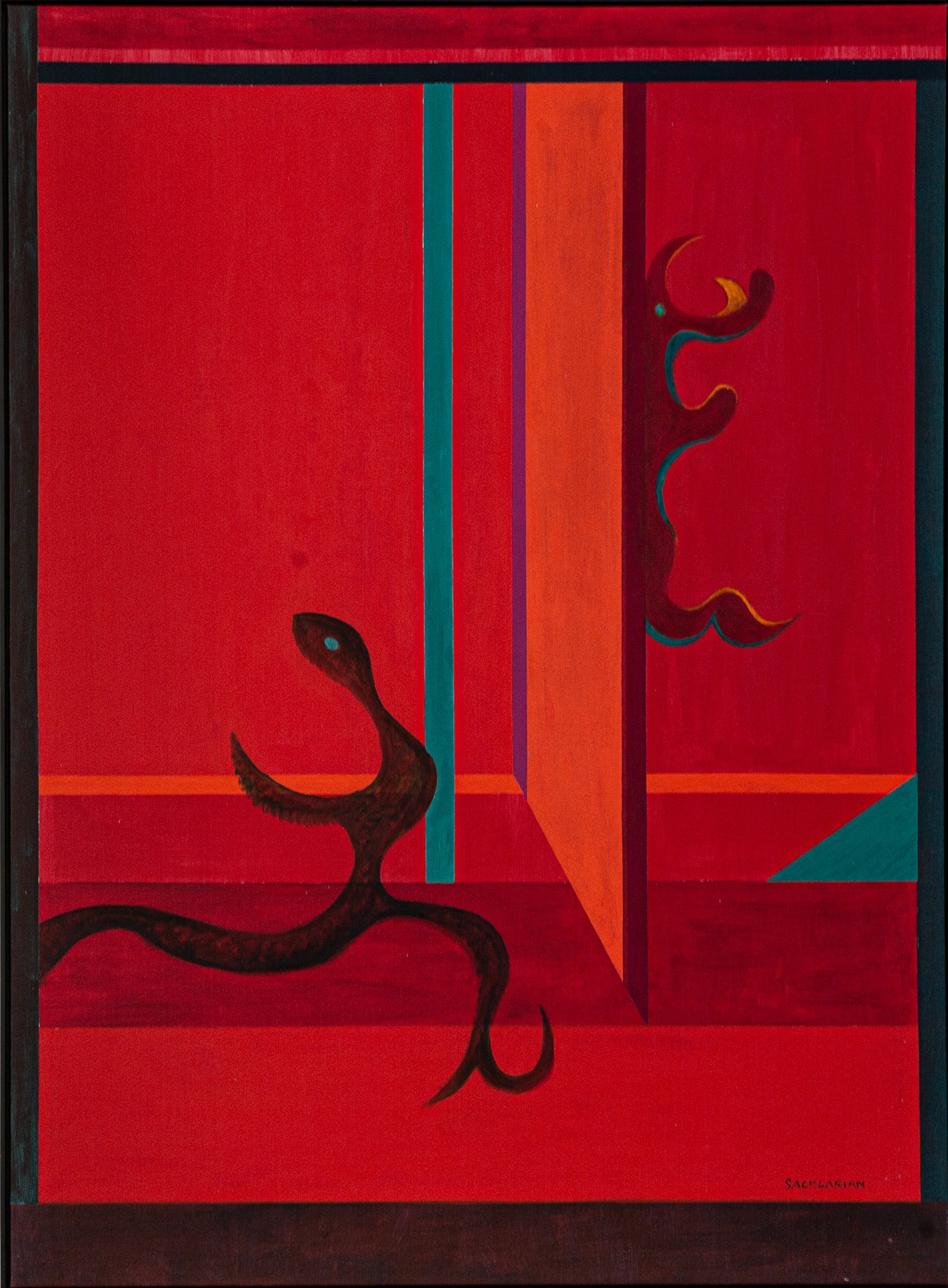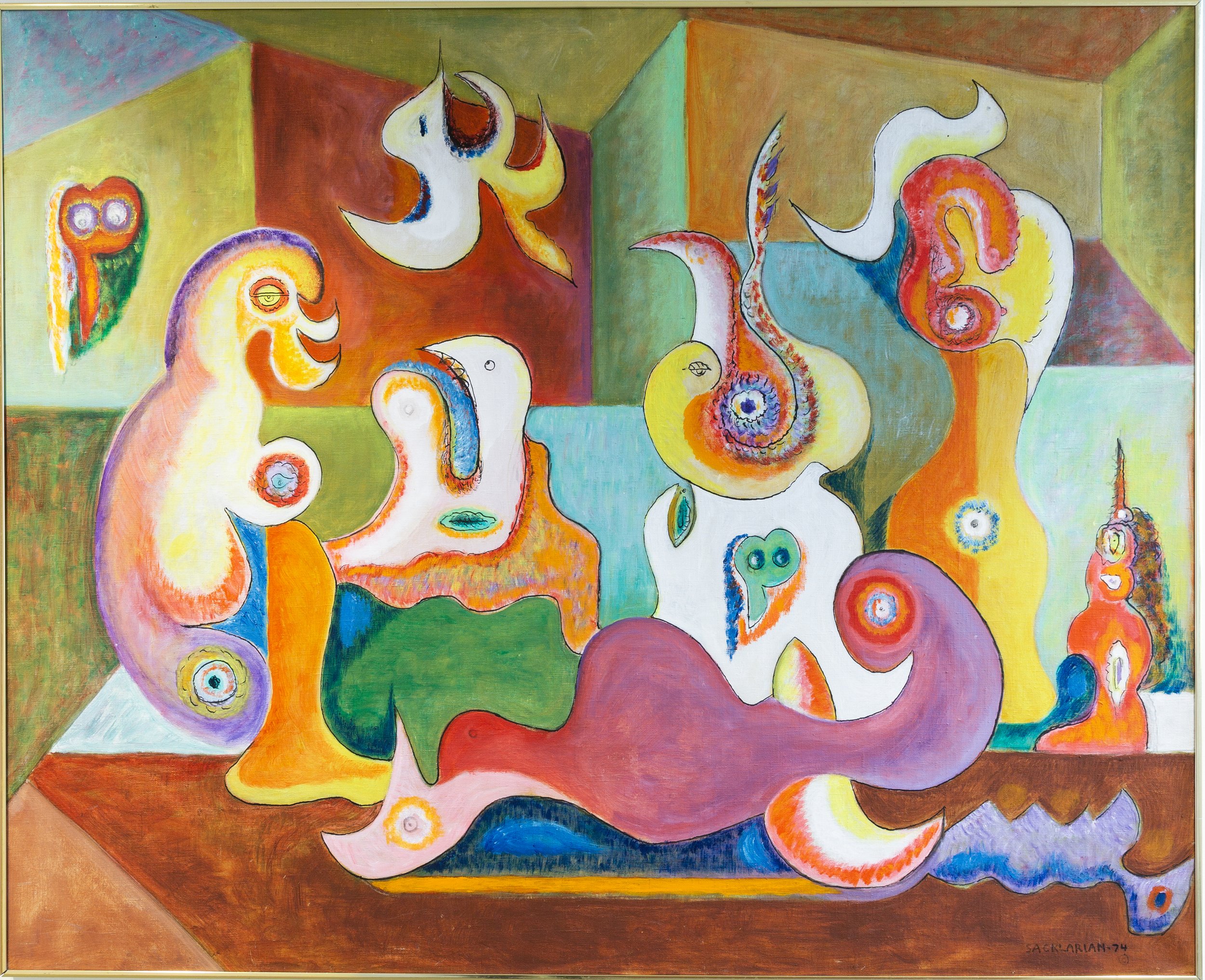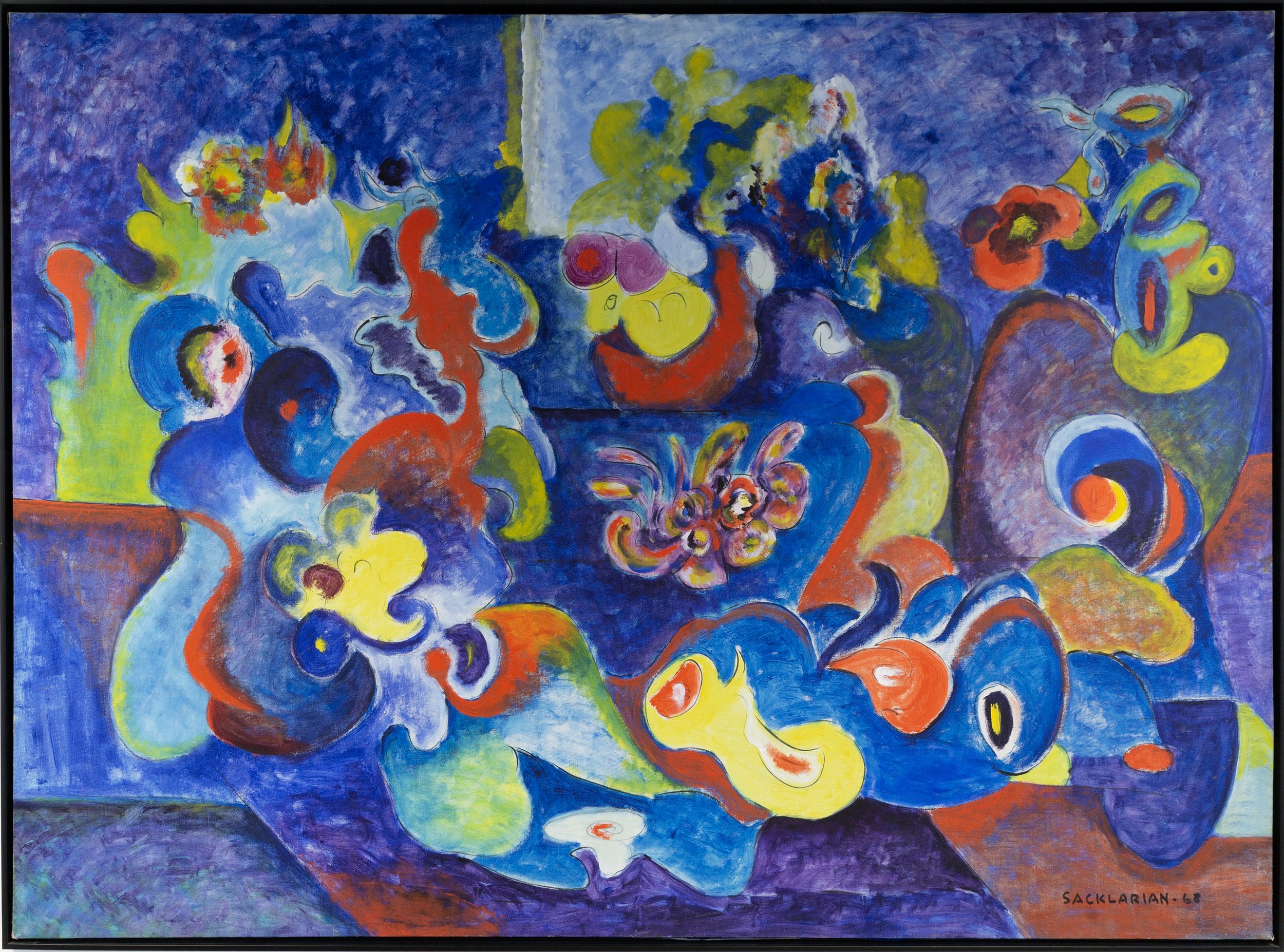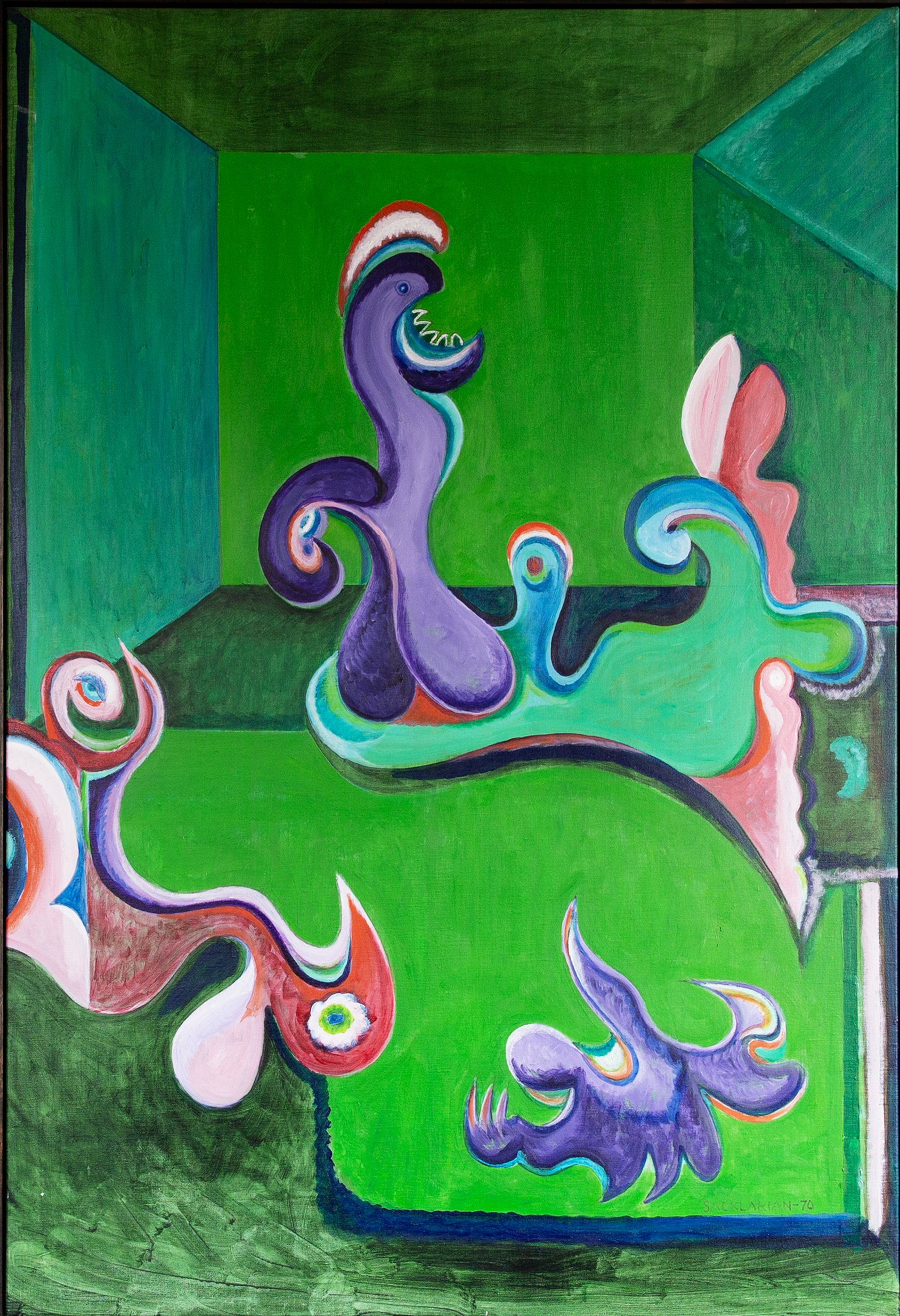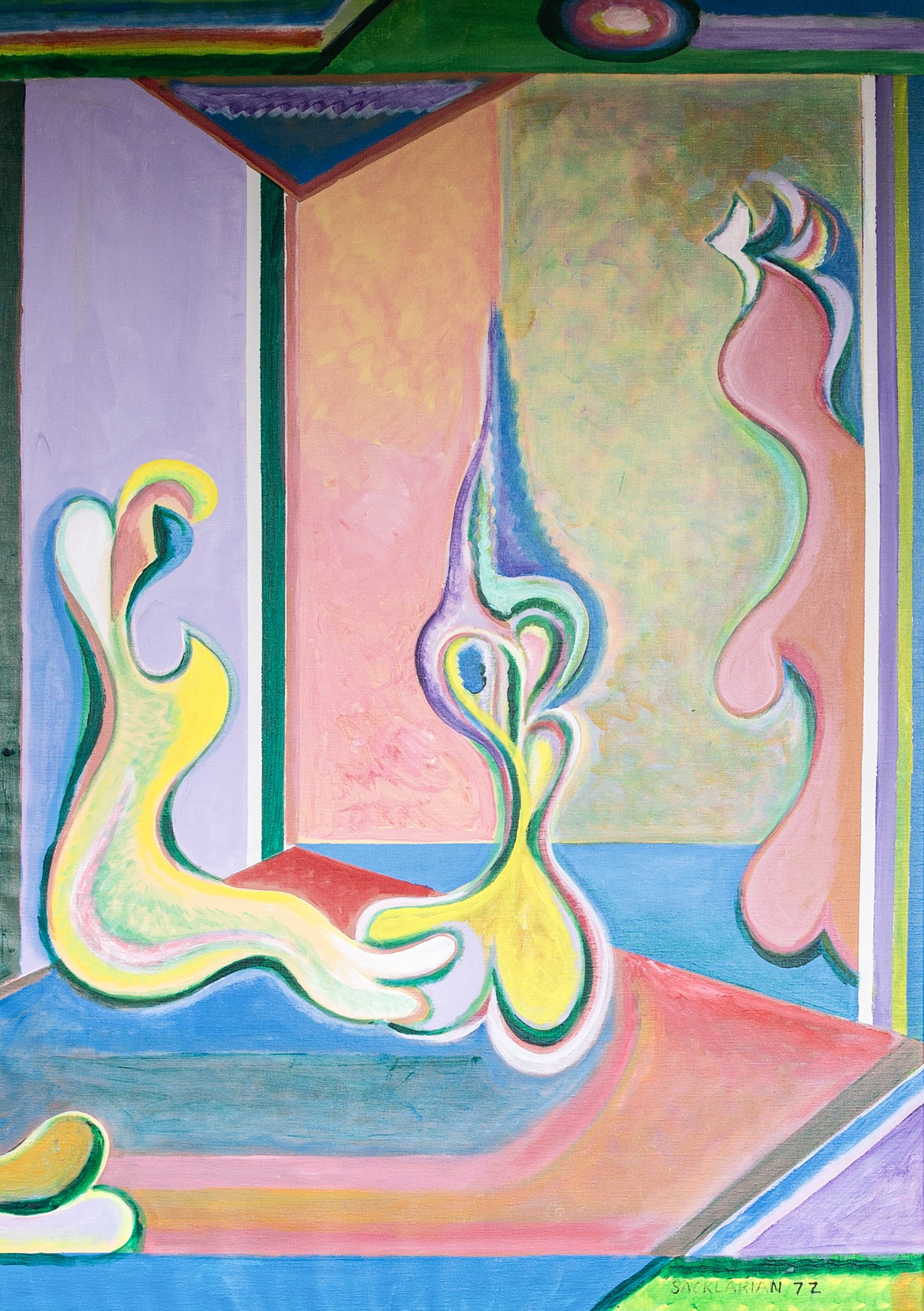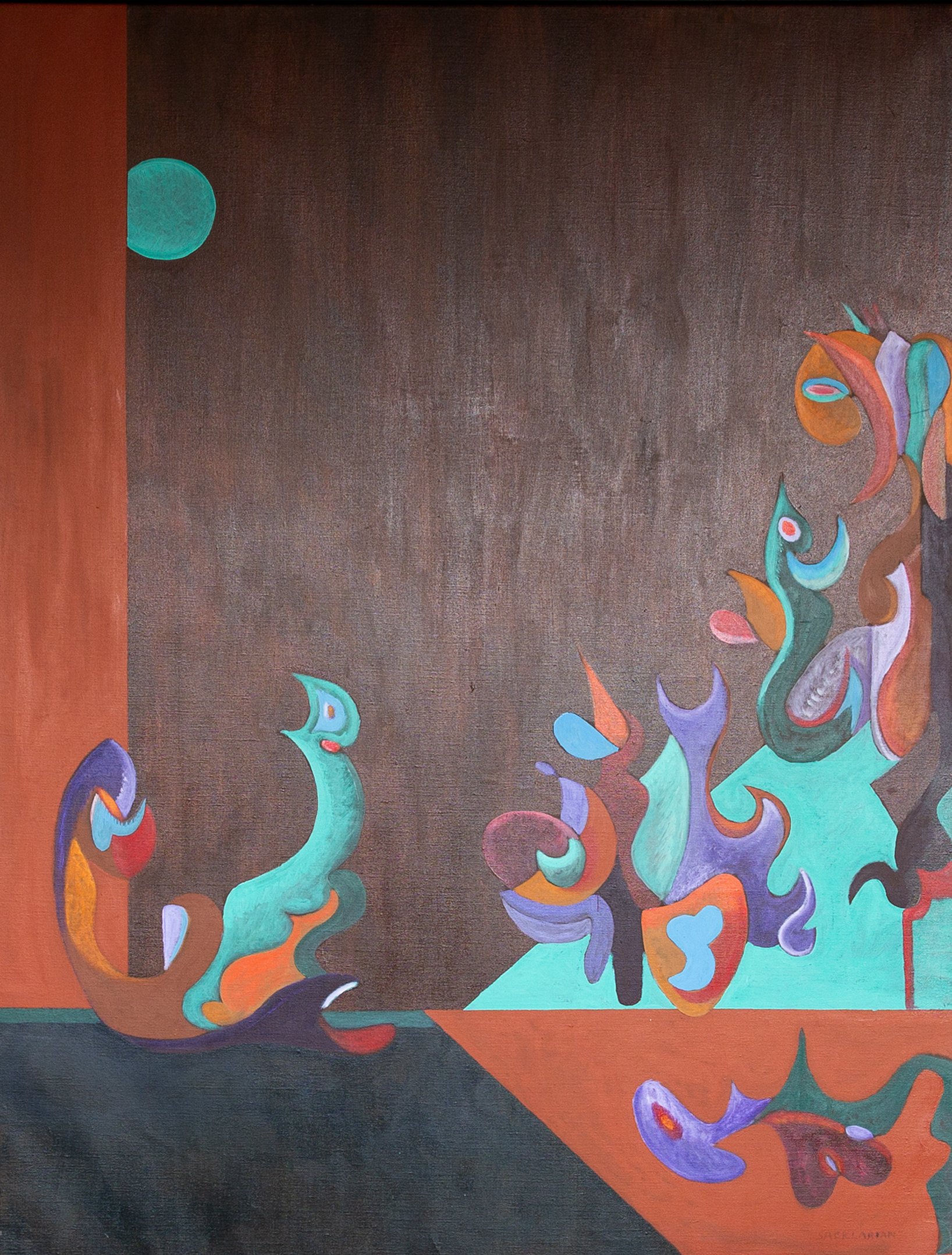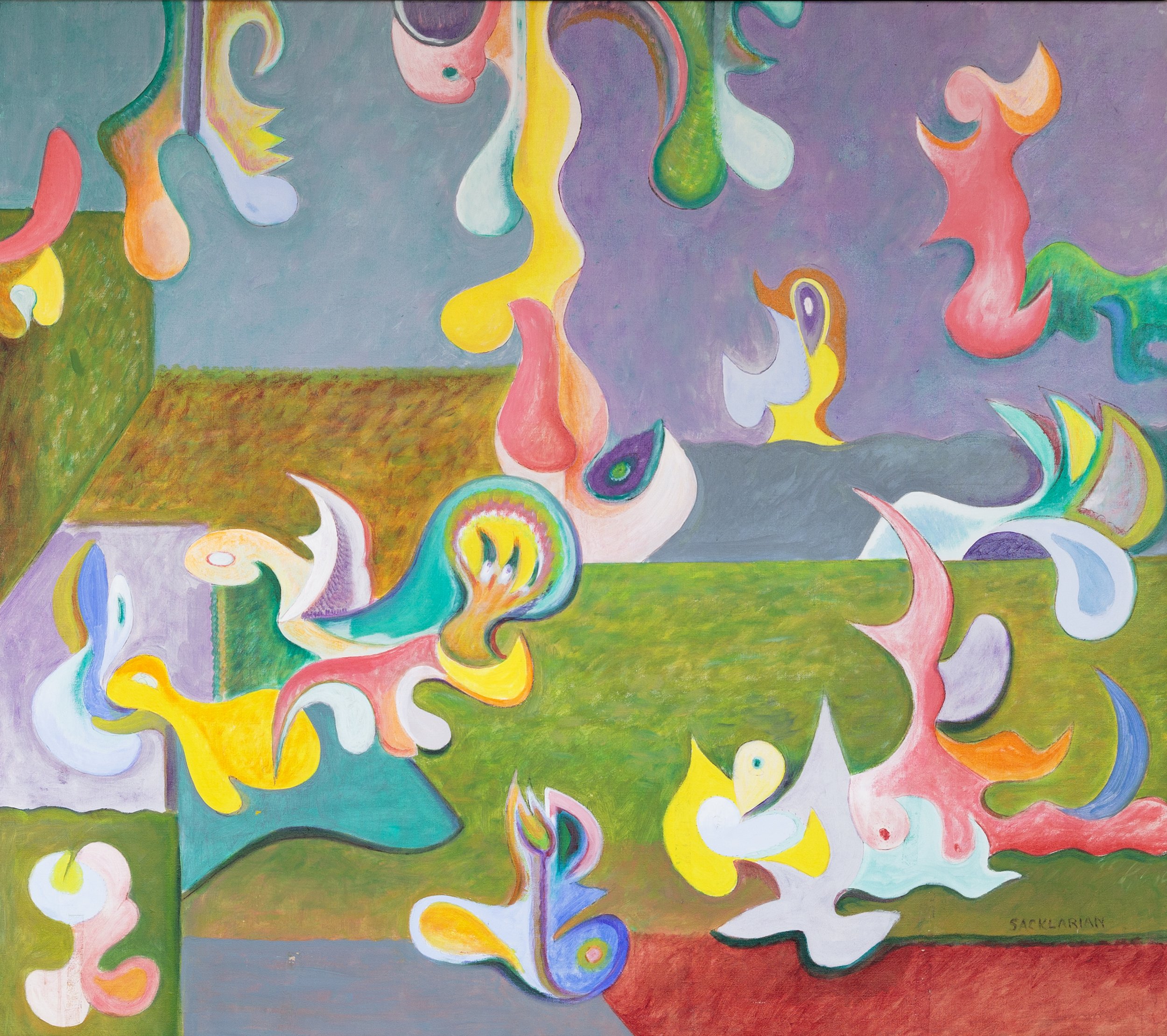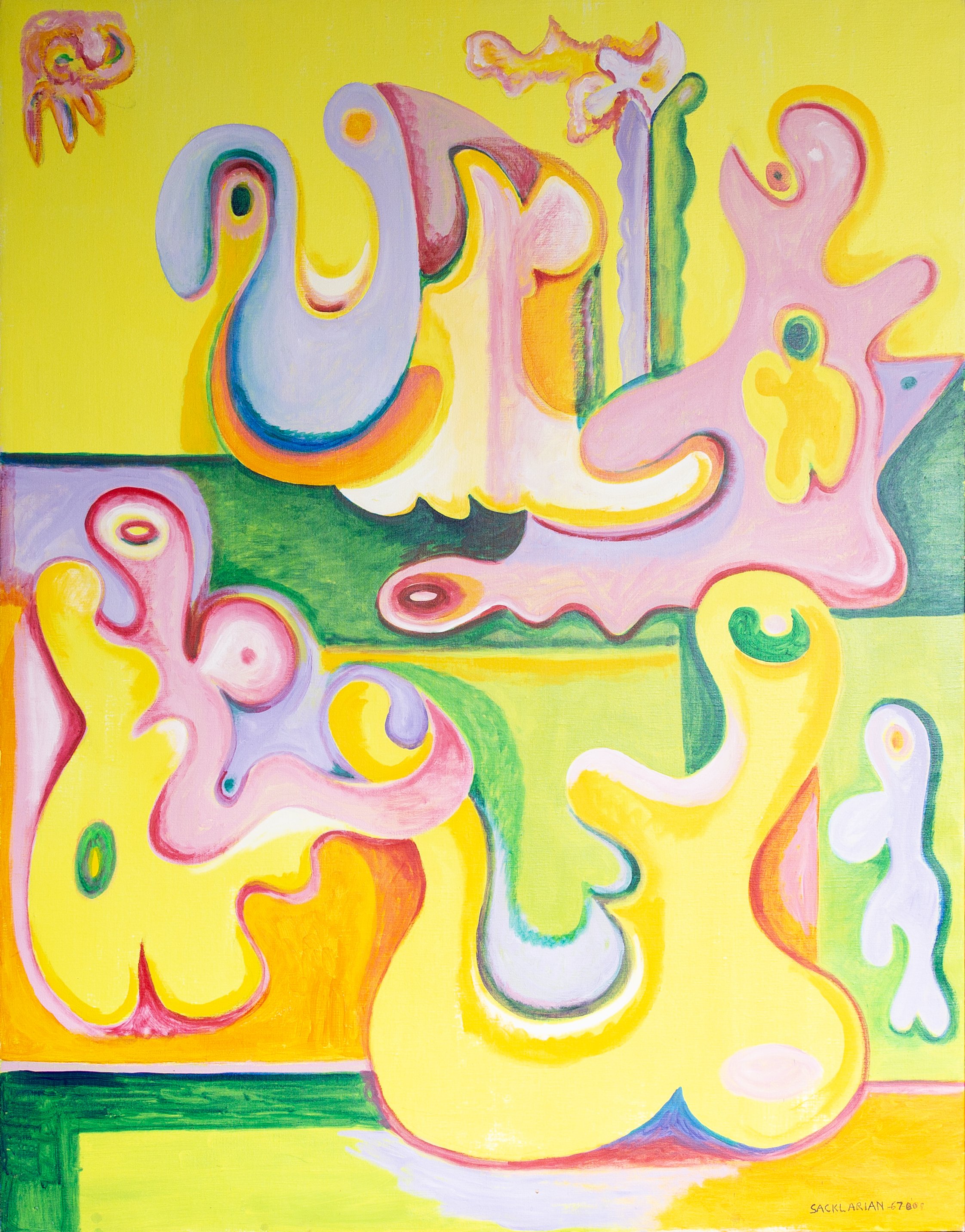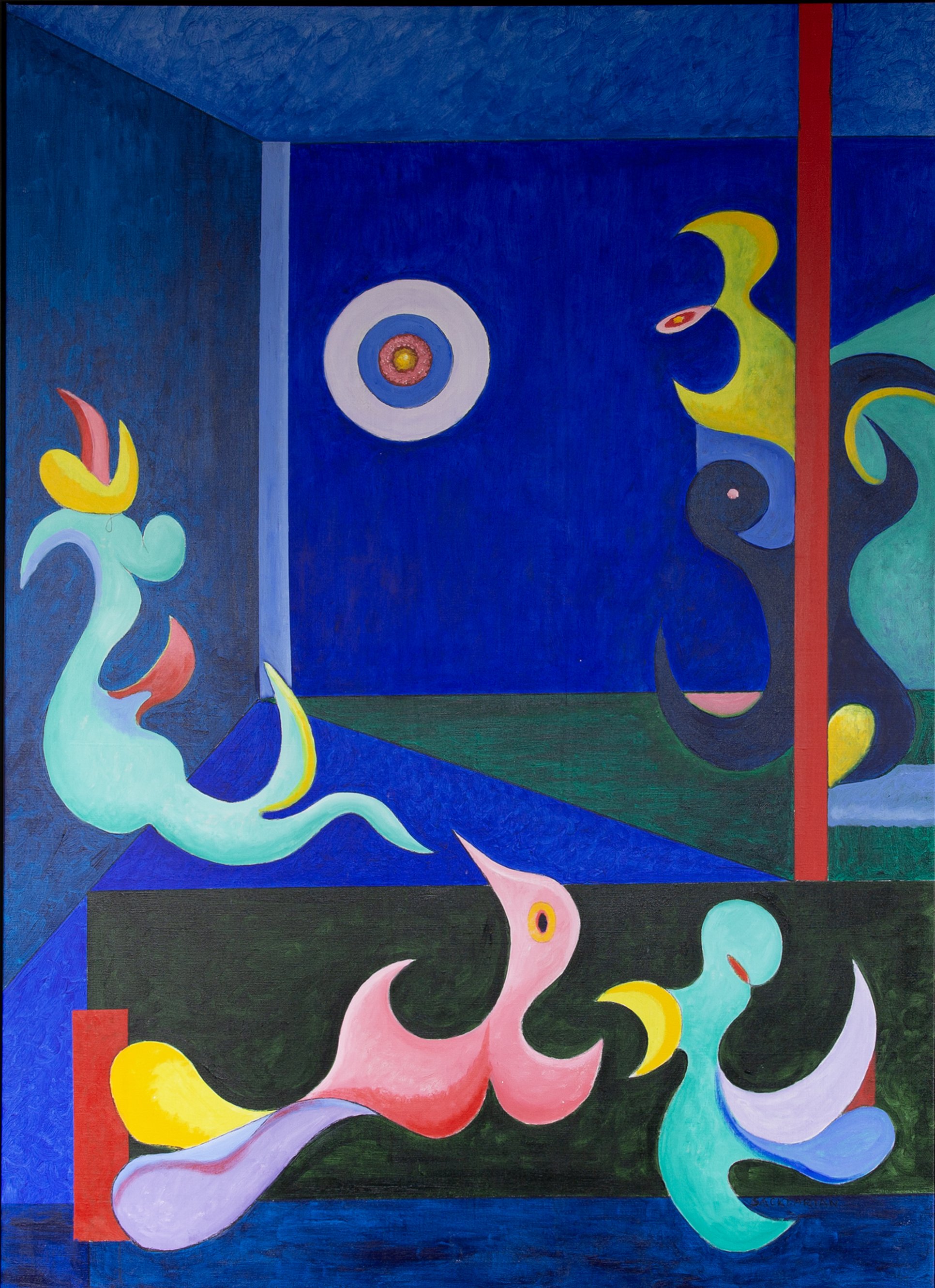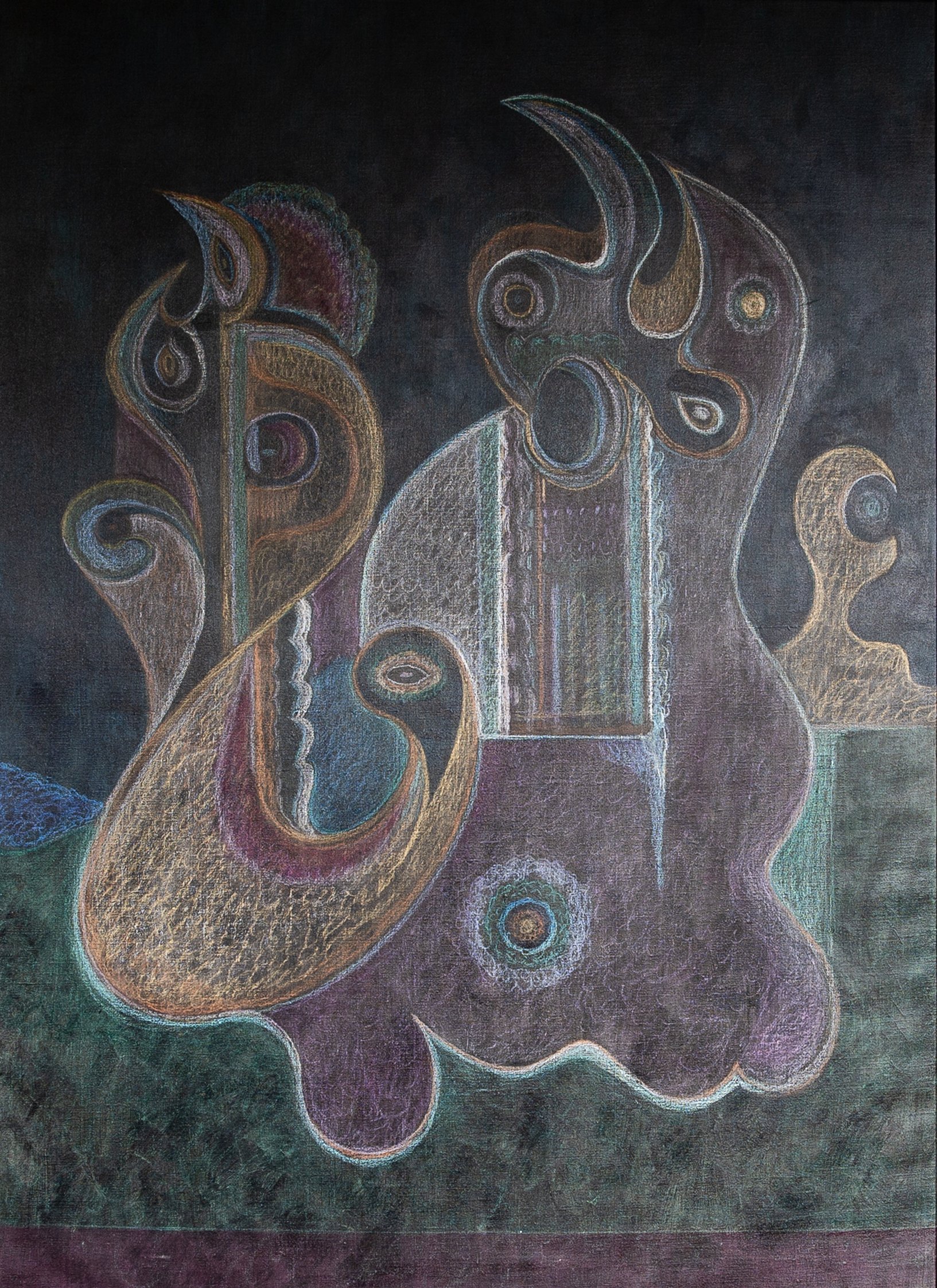Stephen Sacklarian
/About Stephen Sacklarian (1899-1983)
Born Varna, Bulgaria 1899-died Norristown, PA 1983
Dr. Arthur Furman generously contributed Stephen Sacklarian's collection to the GMU collection. Notably, he acquired the artist's works directly from Sacklarian.
Stephen Sacklarian was born in 1899 in Varna, Bulgaria after Sacklarian’s parents fled from Turkey during the Armenian genocide in the late 1890s. The family emigrated to the United States in 1911 where they resided in Philadelphia. Before becoming an artist, Sacklerian spent the early part of his career as an ameteur boxer and a full-time as a sales engineer for General Electric.
Untitled (B-155), 1967 acrylic on canvas, 51" x 66"
Following his decision to pursue art as a career, he received comprehensive art training at the Pennsylvania Academy of Fine Art, the University of the Arts, the T Square Club-School for Architects, the Fleisher Memorial Art School, and, eventually, through private study under the guidance of sculptor Paul Manship.
From the 1930s to the late 1950s, Sacklarian initially embraced a realist style in his paintings. His early works, primarily focused on nude portraits, indoor still lifes, and nature, most of which were destroyed by the artist. During this period, Sacklarian remained relatively obscure in the art world, while searching for the abstract style that would later define his career.
It was during the 1960s, influenced by the burgeoning art movement in New York City, that Sacklarian's interest shifted towards abstraction. The adoption of acrylic paints ushered in a transformative period, offering a newfound palette for his exploration in color and form. This phase birthed Sacklarian's iconic abstract expressionist style, elevating him to recognition. Concurrently, the late 1950s and early 1960s saw him venture into wood sculpture, bearing the indelible marks of African Art—a chapter that were destroyed by the artist during the period of grief following the untimely death of his wife, Ayne.
Ayne Sacklarian, an artist herself and a muse for Sacklarian, died due to a medical error during minor surgery. This tragedy cast a shadow over Sacklarian's life, triggering a deep depression. In the throes of despair, he obliterated his studio and many of his artworks. His art temporarily fell silent as he navigated this dark period, only resuming his creative endeavors years later, a testament to his loving memories of his deceased wife.
In the late 1960s and 1970s, Sacklarian's works took on a vibrant and upbeat quality, reminiscent of his earlier abstract artworks. This period marked a return to his signature style, as he sought to recreate the ecstatic energy that Ayne had once inspired in him.
Sacklarian's paintings are characterized by biomorphic forms dominating the foreground against angular "room-like" backgrounds or dark color fields. Employing perspective and composition, he juxtaposed vivid biomorphic shapes with unidentifiable geometrics. Human and animal forms, along with abstract sexual organs, often hover in the foreground, creating dreamlike and sometimes humorously mischievous compositions. Sacklarian's palette varied, but he consistently favored bright, rich colors. Notably, he claimed to always possess the precise mental image of his finished works before their initial creation, emphasizing the connection between his imagination and the canvas.
On View
Krasnow Institute
Presented at Krasnow Institute (400 University Dr, Fairfax, VA 22030) in the Downstairs Hallway, Great Room 137, and Stairway.
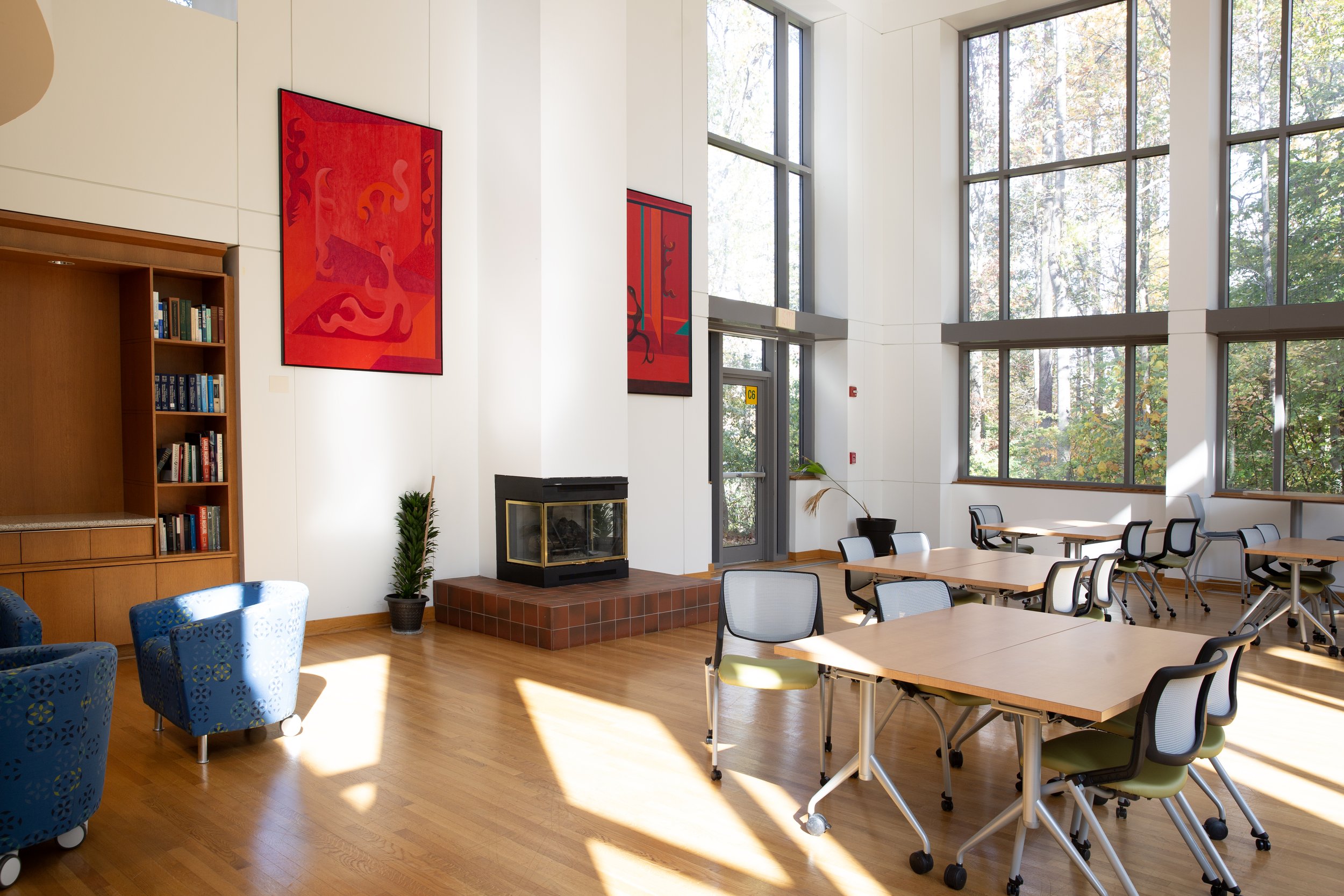
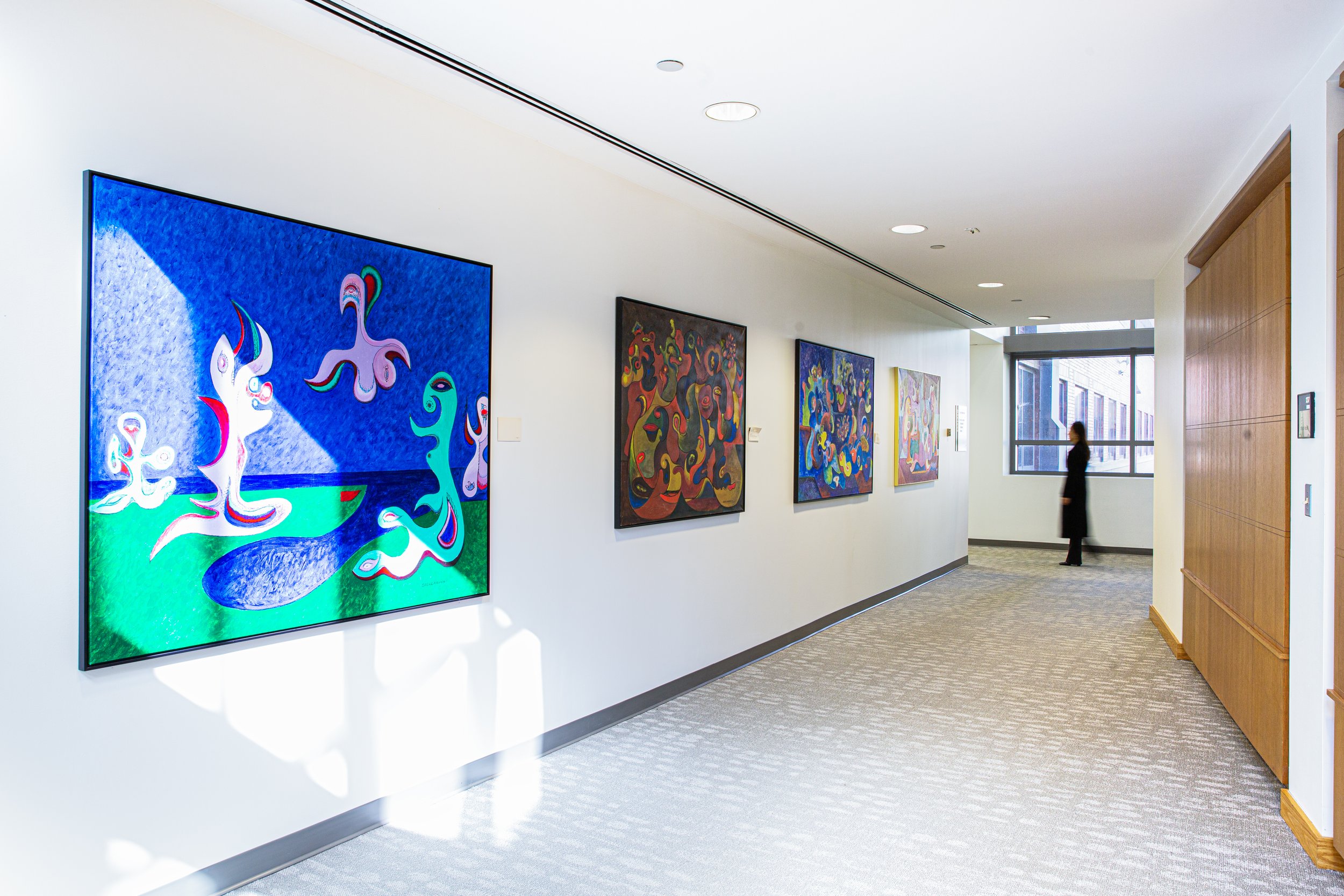
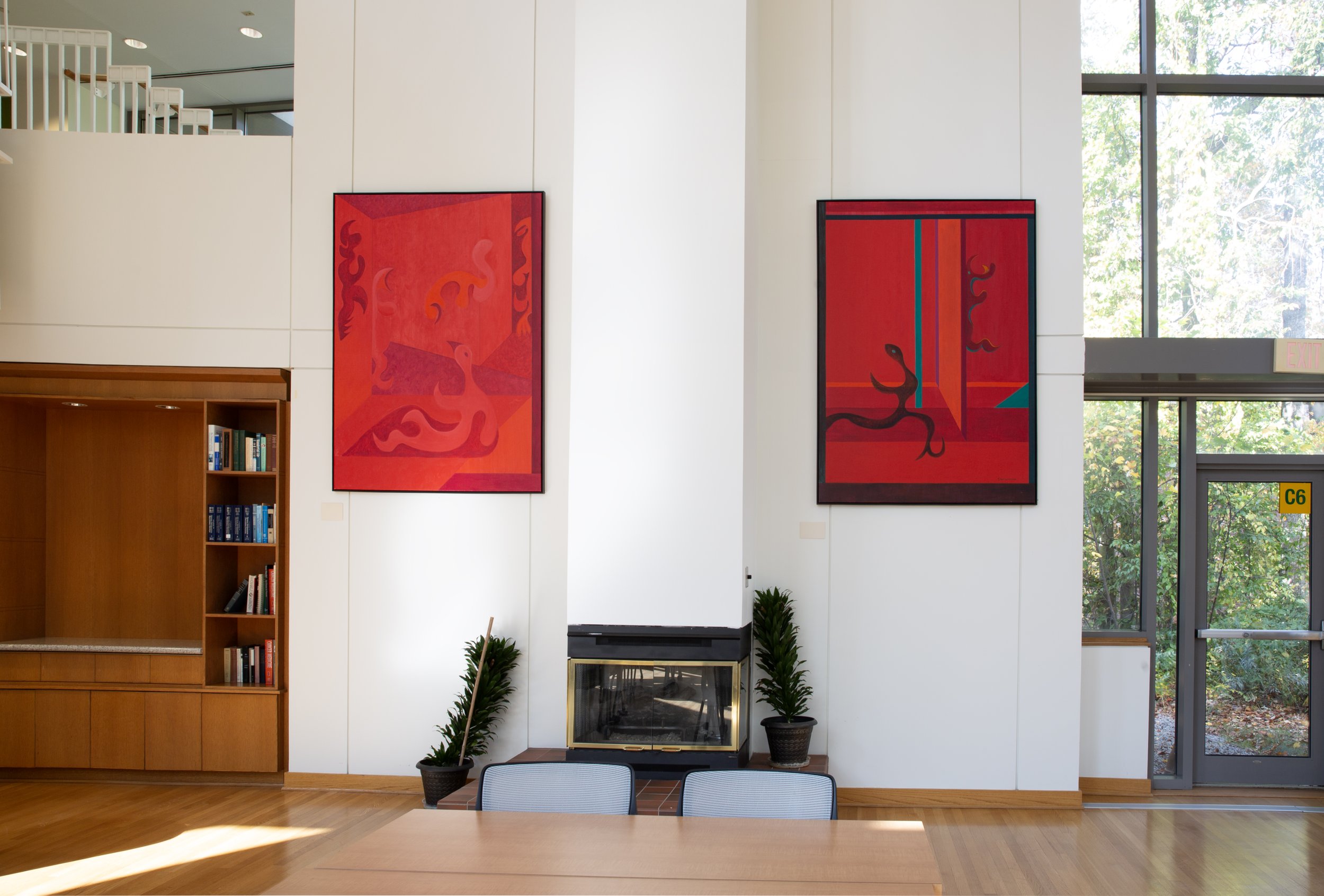
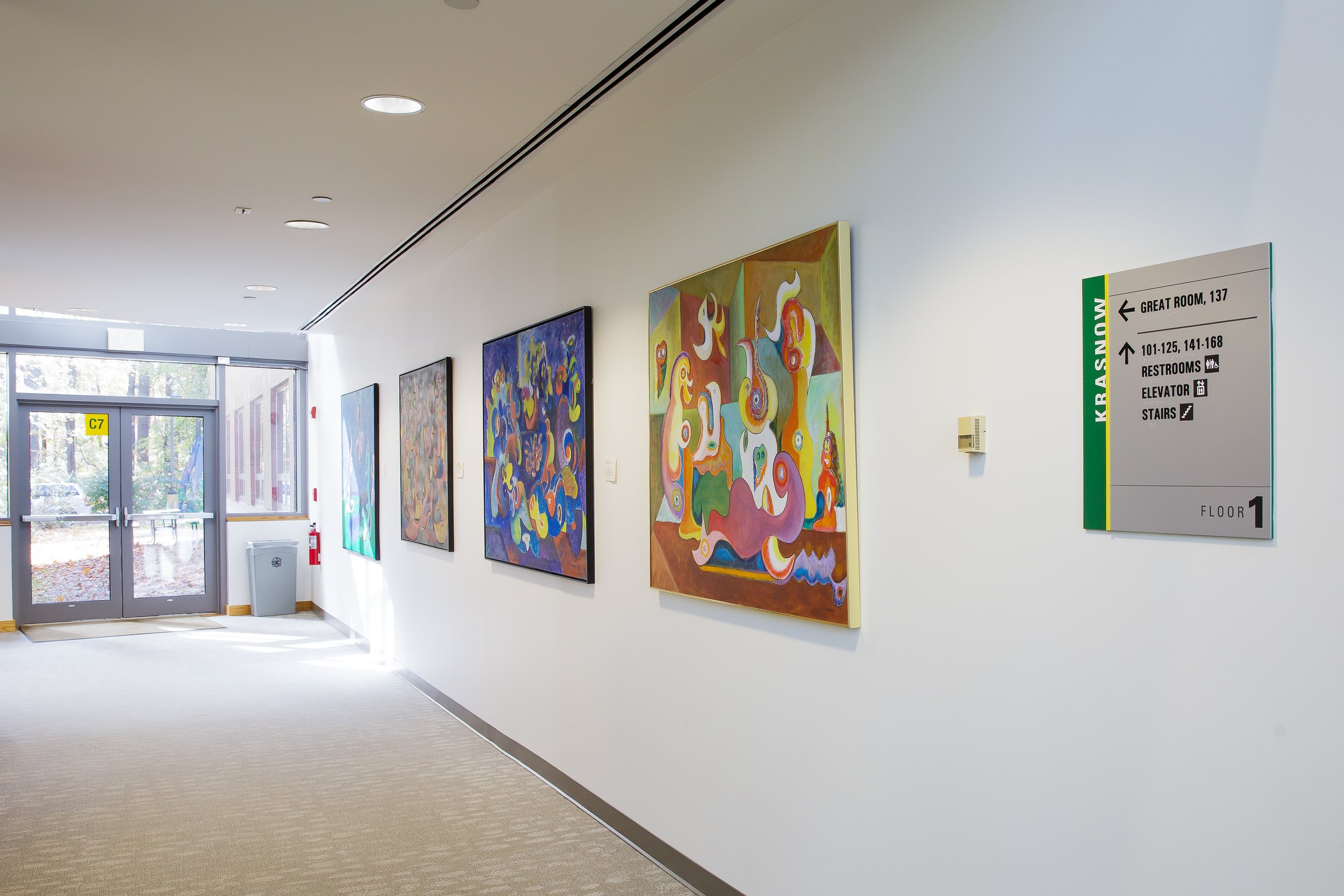
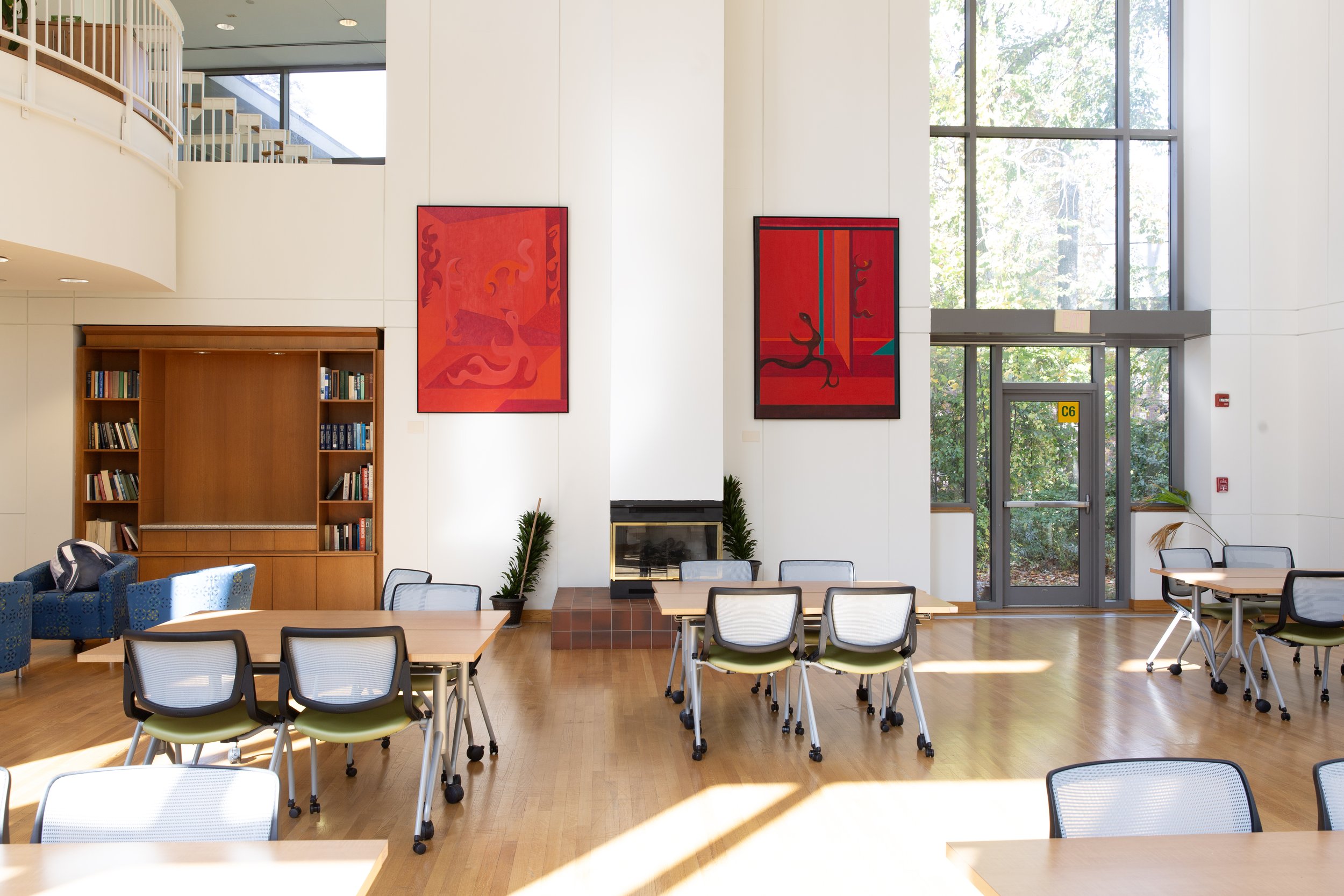
Center for the Arts: Dr. Linda Apple Monson Grand Tier
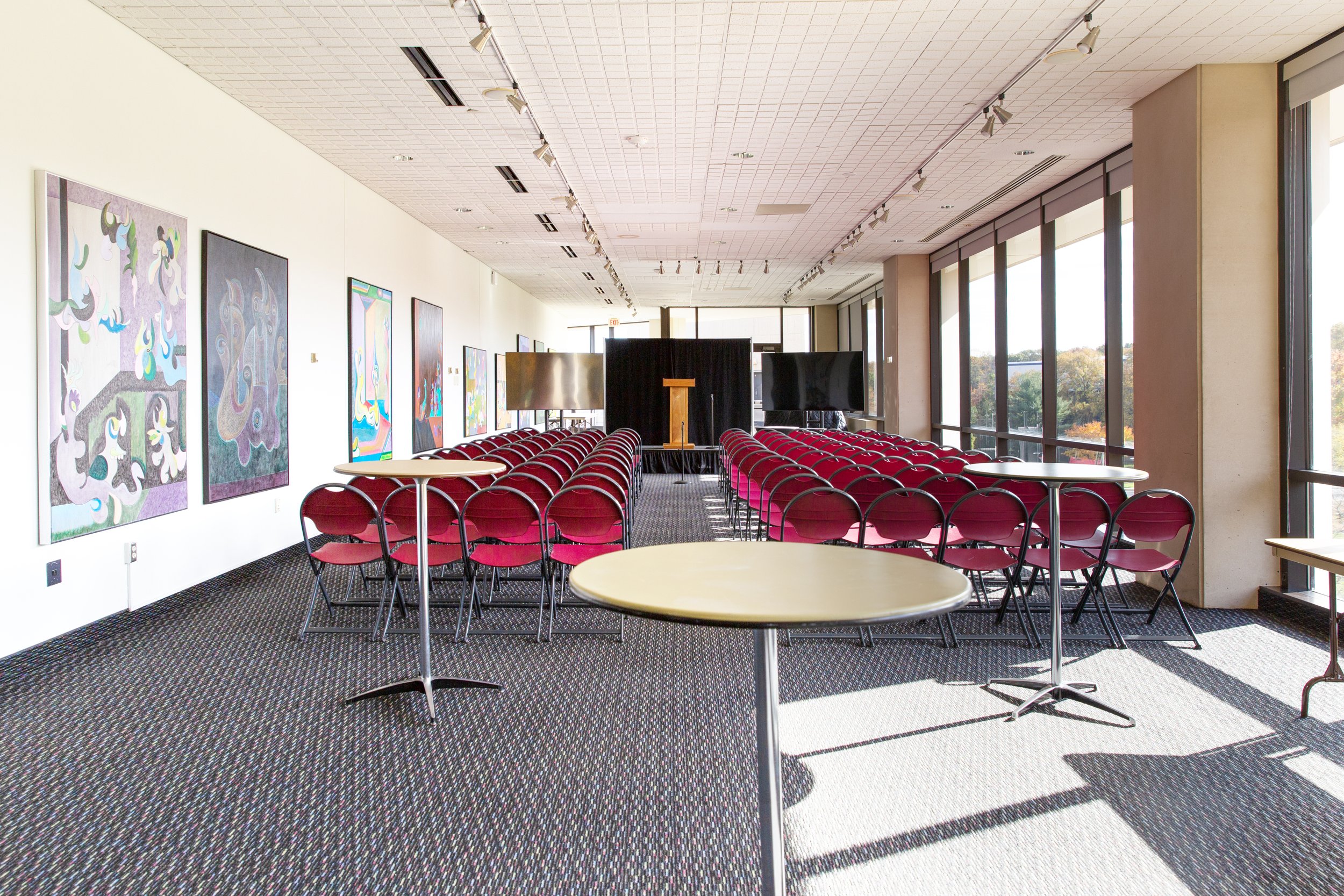
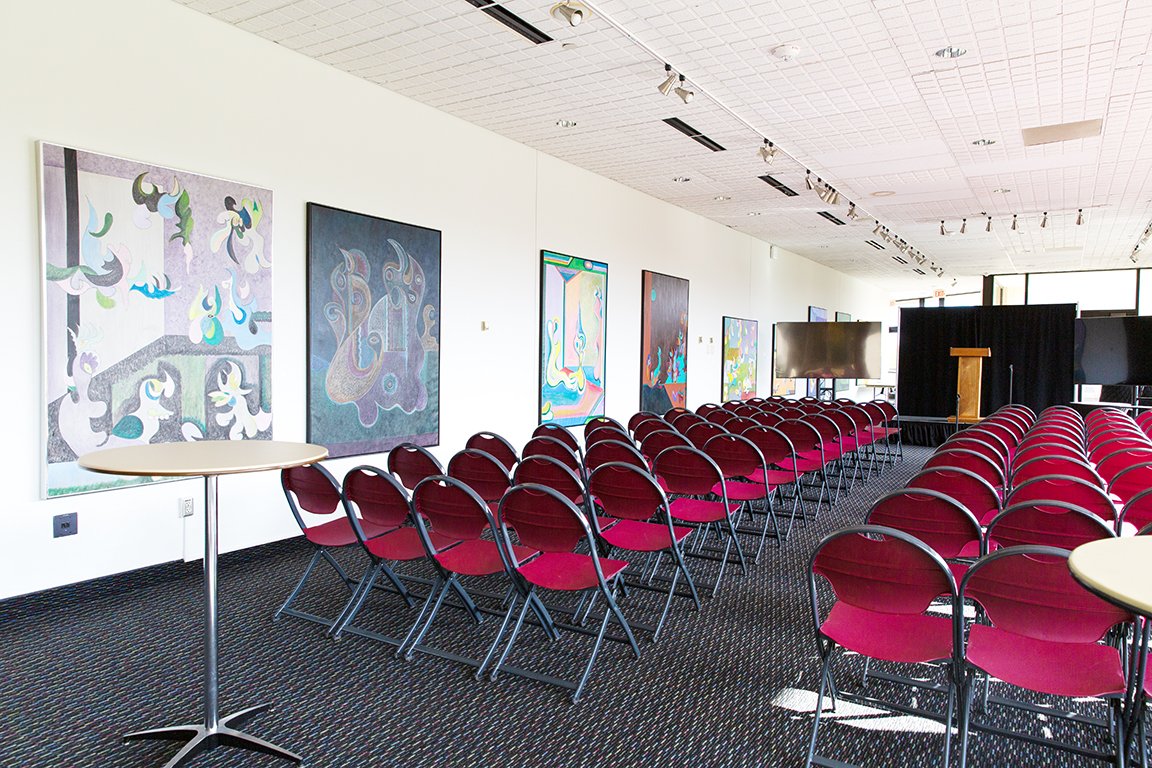
Photo Credit: Sophie Bae / Mason Exhibitions
Researched by Soo Paek and Sophie Bae




